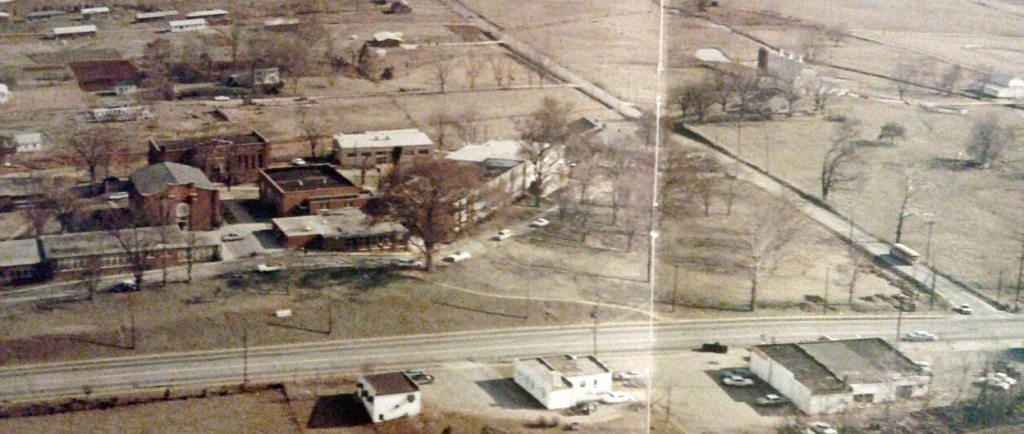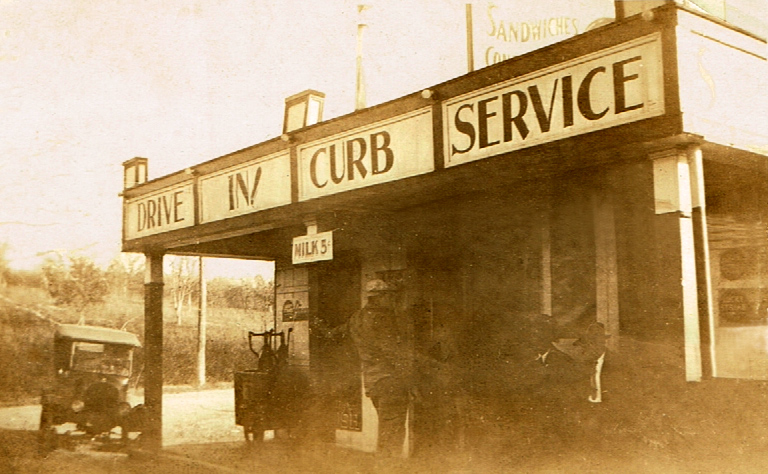By: Allan Wallace
Preamble:
The world of 1903 started out with the first west-to-east transatlantic radio broadcast made from the United States to England. Theodore (Teddy) Roosevelt was President. The first Teddy Bear was introduced that year. The Panama Company was formed and political changes in Panama took place that paved the way for the Panama Canal to be built. The first transcontinental automobile trip was made from San Francisco to New York in a Packard. The first Ford Model A automobile was sold. The first World Series took place. Orville Wright made the first successful, controlled, powered, heavier-than-air flight in December. And, notable births in 1903 were Elliot Ness, Bing Crosby, and John Dillinger. This was the world of 1903.
Tribute:
One hundred and sixteen years ago today (10/30/2019) a baby was born to Alex “Pappy” and Addie “Mammy” Wallace in Concord, Tennessee, an unincorporated town in west Knox County located in the central part of east Tennessee, about 15 miles WSW of Knoxville. Back then Concord only had a General Store, a Post Office, a Livery Stable and a passenger train stop.
Horace W. Wallace was born on October 30th, 1903; the youngest of four children, his siblings were Edward, Kim, and Roxie. Papaw never has liked his middle name, Walter, so he never used it, only his middle initial.
Just two months before Papaw’s birth, Farragut School opened its doors for the first time in west Knox County just two miles from where Papaw grew up and at the corner of Concord Road and Kingston Pike. This school and this intersection would become a big part of Papaw’s life and the lives of all his children, most of his grandchildren and even some of his great grandchildren, who attended and graduated from Farragut School when it was at that location.
Farragut School was named after David Glasgow Farragut, the first Admiral of the US Navy who was born nearby but as far as anyone knows he grew up somewhere else and never even visited the site of his birth. Papaw attended Farragut School for three years, which was common back then. But in those three years he learned enough of the basics (Readin’, ‘Ritin’, and ‘Rithmatic, the 3Rs?) to be able to help his children with their homework even when they were in high school.

In the early 20’s Papaw’s girlfriend introduced him to her best friend, Nina Bracken, who worked in Kress’s Department Store in downtown Knoxville and he was immediately infatuated with her. The relationship with his girlfriend was nearly at an end because Papaw said that he was getting tired of taking her places, like a movie at the Tennessee Theater, only to hear her complain that she would rather be at home reading a book, alone. The young woman’s signals were becoming clear even to Papaw that she was bored with the relationship and wanted it to be over. But Papaw was frustrated why she didn’t just call it off, she kept accepting date requests from him and then acted bored the whole time. So, he asked Nina out on a date. She refused out of respect for her friend. But later after Papaw finally broke up with the young woman he never named, he asked again, and Nina accepted. Nina was just as educated (high school level) as her friend, but according to Papaw, Nina was much less stuck up. After an appropriate courtship, they married and had 4 children: Evelyn Ruth, Edna Etta, Alvin Lee, and Carol Lynn.
Kingston Pike (Hwy’s 11 & 70) was the major thoroughfare between Knoxville and the Knox County line where it splits and highway 70 goes on to Kingston. But highway 11 turned south and was the major route between the northern states and Florida back then. In the late 20’s and throughout the 30’s it was little more than a gravel road. But during Prohibition, Kingston Pike was known as Thunder Road because of its use as a transportation route for moonshine; “Revenuers” often chased moonshine runners on this road. There was even a movie made about it in 1958.

Papaw’s middle brother, Kim, opened a business in a leased building that today would be called a convenience store. It had a small grocery and lunch counter inside, a gasoline pump and a soda cooler out on the porch. After the stock market crash of late 1929, businesses were failing right and left, and jobs became hard to find. But business just kept getting better for Kim’s business due to a building boom in Florida. So, Kim offered to make his brother, my Papaw a full partner in the business if he would help run it. Papaw accepted the offer. The sign on the business only said, “Wallace Brothers” but Papaw always called it simply “The Stand”. It was located on Kingston Pike across Concord Road from the original Farragut School.

Despite the Stock Market Crash of 1929 and the Great Depression that hit its lowest point in the spring of 1933, the boom in Florida kept a steady flow of traffic past the stand. That flow supported both Wallace Brothers and their families until the traffic flow declined in 1935 due to what seemed like a never-ending economic depression. By December of 1936 Papaw and Kim decided to close The Stand before the new FICA Tax would start in January. And at that point, the business was barely keeping food on the tables of both families as it was. Several tax increases in the 30s to support “the New Deal” caused a “depression” of sorts in the entrepreneurial spirit in the USA which was one of the reasons for the long, slow recovery.
What followed was a very hard time for Papaw and his family since many of the government fixes for the economy actually lengthened the Great Depression. The USAs entry into World War II in 1941 gave the economy a brief respite. But the lasting effects of the slow recovery were felt until the late 40s. It stands to this day as the longest and deepest economic downturn in American history.
Work was hard to find after the Stock Market Crash and throughout the Great Depression. Outside of the seven years Papaw and his brother had The Stand, Papaw found work where he could. This consisted of odd jobs, working on an as-needed basis with a previous employer (Standard Knitting Mills) and for a short time with the WPA. In the late 20s, before the crash, Papaw rented a small lot with a one-room shack in Pond Gap near Hollywood Hills in what was then near the western end of Knoxville. And with the help of his two brothers, he built onto it, making it a small three-room house.
Papaw told a story on himself that was set during this time: On a particular payday (they paid in cash back then), Papaw said he stopped off at a bar with some of his coworkers for a beer. But one of those guys made a challenge of seeing who could drink the other under the table, the loser pays, of course. He had never been a drinking man and Papaw admits that he was foolish to accept the challenge but did so out of a youthful and foolish pride. And as you might expect he lost. He arrived home much later with empty pockets and a “snoot full.” Sicker than he had ever been in his life and with a head that throbbed, he complained to his God-fearing and church-going wife, “I feel like I’m goin’a die!” Her response was the punch line to the story, “Well, you ought to!!!” leaving Papaw to decide if she meant that he ought to feel that way, or that he actually should die.
When the USA entered the Second World War, the economy improved somewhat and there was for about three years enough jobs to go around. With work again steady at Standard Knitting Mills, Papaw took the bold step of talking to a realtor that knew his family and convinced the realtor to sell to him a tract of land in west Knox County that used to be part of the old Hood Farm. He did this on his signature alone; the property did not stand as collateral, only his good name. And the good name of the realtor because he held onto the Deed until Papaw paid the agreed upon amount (it took about 4 years to pay). Times have changed a lot since then.
He finished raising his children there and through the years sold or gave each of them a portion of the property on which they could build a home. In the mid-late 60’s the last of Horace and Nina’s children built a home there and not long after, we started referring to it as “Wallaceville”. No one remembers who started calling our extended family Wallaceville, but whenever we’d say that name it would be with a smile as if it were a private joke.
Over the last 55 years or so Papaw and Granny’s family grew to include 6 Grandchildren, 13 (2 adopted) Great-Grandchildren, and 9 plus a few adopted Great-Great-Grandchildren, so far. For a time in the 1990s, four of Papaw’s and Granny’s 5 generations lived in Wallaceville.
Postscript
I grew up in Wallaceville and when I was a teenager, Horace and Nina’s youngest child, Carol and her husband Gale were building a rather large house. One time, I went to a small family-owned grocery store about a half mile away called “The Little Brick Grocery” ran by a man and his wife who lived in the same building and their last name was Rivers. When I was ready to check out, Mrs. Rivers said, “That is a mighty big house the Andersens are building, are all you Wallaces going to live in it?” I was both amused and annoyed by the question, but I quickly responded, “No, I think they are planning on having a lot of grandkids.”

I will always remember the time we took a family trip to Disney World in Florida in 1984. It was not long after Granny passed away, so Papaw and I were roommates. I got to know my Grandfather on that trip, we palled around together and had a great time. We were very close throughout the remainder of his days.
A few years before his death, someone asked Papaw how he managed to live so long. And he responded with, “Well, I never took up smokin’ and I never took up drinkin’.” At least, we know now how he learned his lesson on not drinking. But lessons learned the hard way are often the best.
The original version of this was written October 30th, 2003 for my Grandfather’s 100th Birthday. He died on May 17, 2004.

Al, thank you for sharing this wonderful story about Papaw. Such a wonderful story of his life. I have a plate, bowl and mug from The Stand and cherish them.
LikeLiked by 1 person